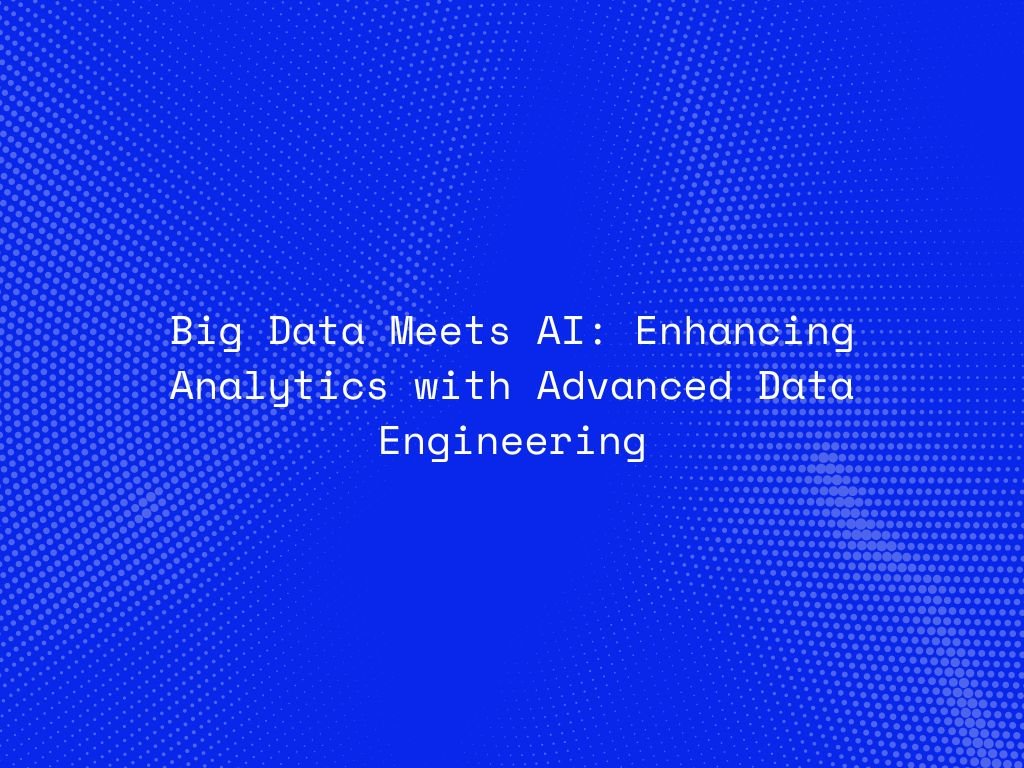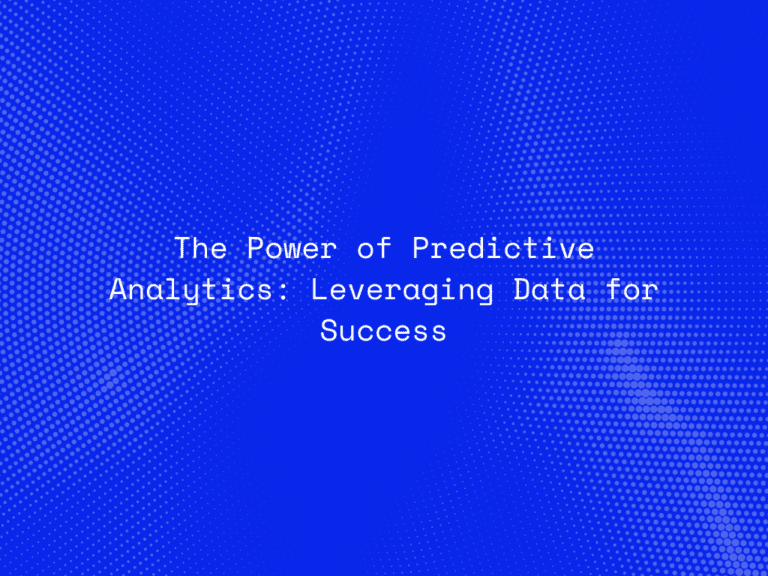In the digital age, data is a critical asset for businesses, driving decisions and strategies. The advent of big data has enabled organizations to collect and analyze vast amounts of information. Simultaneously, artificial intelligence (AI) has emerged as a powerful tool for deriving insights from complex datasets. When combined, big data and AI create a potent synergy that revolutionizes data analytics, enhancing decision-making and operational efficiency. This blog explores how the integration of AI and machine learning is transforming big data analytics, highlighting the technologies, techniques, and real-world applications driving this revolution.
The Convergence of Big Data and AI
Big data refers to the large volumes of structured and unstructured data generated by various sources, including social media, sensors, and transactional systems. AI, particularly machine learning (ML), involves algorithms that learn from data to make predictions or decisions. The convergence of big data and AI is driven by the need to extract meaningful insights from vast datasets, something traditional analytics methods struggle to achieve. AI enhances big data analytics by providing advanced tools for data processing, pattern recognition, and predictive modeling.
Key Technologies Driving Integration
Several key technologies facilitate the integration of big data and AI:
Machine Learning Frameworks:
- TensorFlow: An open-source ML framework developed by Google, used for building and training AI models.
- PyTorch: Another popular ML framework, favored for its flexibility and ease of use.
- Scikit-learn: A Python library providing simple and efficient tools for data analysis and ML.
Big Data Platforms:
- Apache Hadoop: A framework for distributed storage and processing of large datasets.
- Apache Spark: An open-source unified analytics engine for large-scale data processing.
- Google BigQuery: A serverless, highly scalable, and cost-effective multi-cloud data warehouse.
Data Storage Solutions:
- NoSQL Databases (MongoDB, Cassandra): Designed to handle large volumes of unstructured data.
- Data Lakes (AWS Lake Formation, Azure Data Lake): Centralized repositories that allow storage of structured and unstructured data at scale.
Cloud Computing: Cloud platforms like AWS, Azure, and Google Cloud offer scalable resources for deploying big data and AI applications, enabling businesses to process and analyze data efficiently.
Techniques Enhancing Big Data Analytics with AI
Several techniques are used to enhance big data analytics with AI:
Data Preprocessing and Cleansing: AI algorithms can automate data cleaning processes, removing duplicates, correcting errors, and ensuring data consistency.
Feature Engineering and Selection: Machine learning models can identify the most relevant features from raw data, improving the performance of predictive models.
Real-Time Data Processing: AI-powered tools enable real-time processing of data streams, allowing businesses to gain immediate insights and respond proactively.
Predictive and Prescriptive Analytics: AI models can predict future trends and provide recommendations, helping businesses make informed decisions.
Natural Language Processing (NLP): NLP techniques allow the analysis of unstructured data, such as text from social media or customer reviews, providing deeper insights into customer sentiment and behavior.
Connect With Us
Benefits of Integrating AI with Big Data Analytics
Integrating AI with big data analytics offers numerous benefits:
Improved Accuracy and Speed: AI algorithms can analyze large datasets more accurately and quickly than traditional methods, providing faster and more reliable insights.
Enhanced Predictive Capabilities: Machine learning models can predict future trends and outcomes with high precision, aiding in strategic planning.
Scalability and Efficiency: AI-powered tools can handle and analyze large datasets efficiently, making it easier to scale analytics operations.
Uncovering Hidden Patterns: AI can detect patterns and correlations in data that may not be apparent through traditional analytics, revealing valuable insights.
Real-Time Insights: The ability to process data in real-time enables businesses to act on insights immediately, improving agility and responsiveness.
Real-World Applications and Case Studies
The integration of AI and big data analytics has numerous real-world applications across various industries:
Retail: AI-enhanced analytics helps retailers personalize marketing strategies, optimize inventory management, and enhance customer experiences.
Healthcare: Predictive analytics powered by AI can forecast patient outcomes, manage disease outbreaks, and optimize treatment plans.
Finance: Financial institutions use AI to detect fraud, assess risk, and automate trading strategies.
Manufacturing: AI-driven predictive maintenance helps manufacturers anticipate equipment failures and optimize production processes.
Case Studies:
- Retail: A major retailer uses AI to analyze customer data, personalizing marketing campaigns and increasing sales by 20%.
- Healthcare: A hospital implements predictive analytics to identify high-risk patients, reducing readmission rates by 15%.
- Finance: A bank deploys AI to detect fraudulent transactions in real-time, preventing millions in potential losses.
- Manufacturing: A manufacturing plant uses AI for predictive maintenance, reducing downtime by 30%.
Future Trends and Developments
The future of AI and big data integration is promising, with several emerging trends:
Deep Learning and Reinforcement Learning: Advancements in deep learning and reinforcement learning will further enhance the capabilities of AI in big data analytics.
Edge Computing: Processing data closer to the source (at the edge) will enable faster and more efficient analytics, particularly for IoT applications.
Automated Machine Learning (AutoML): AutoML tools will simplify the creation of machine learning models, making AI more accessible to non-experts.
Ethical AI: As AI adoption grows, there will be an increasing focus on ethical AI practices to ensure fairness, transparency, and accountability.
Conclusion
The integration of AI with big data analytics is revolutionizing how businesses process and analyze data, leading to more accurate insights and better decision-making. By leveraging advanced technologies and techniques, organizations can enhance their analytics capabilities, uncover hidden patterns, and gain a competitive edge. As AI and big data continue to evolve, businesses must stay abreast of emerging trends and invest in the right tools and strategies to harness their full potential.




